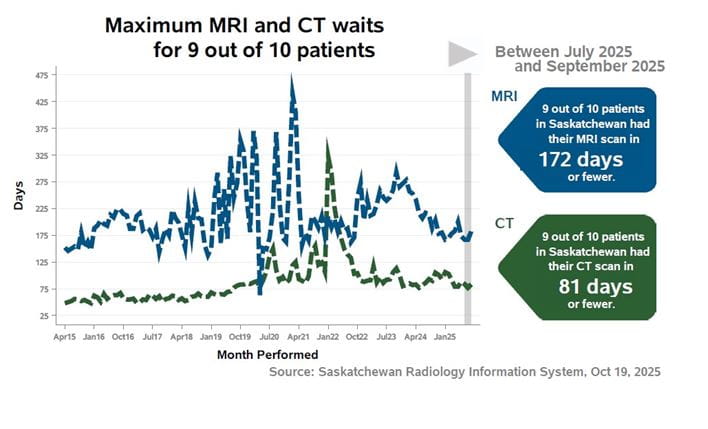The Ministry of Health is working with its health system partners to enhance the reporting of diagnostic imaging wait time information. The following chart shows the maximum length of wait experienced by nine out of 10 Saskatchewan patients who received their MRI or CT scans during the most recently reported three-month period. Statistics are updated quarterly.
The 90th percentile wait time was 172 days for MRIs performed in the second quarter of 2025-26 (July to September 2025). As indicated in the graph, there was a decrease of 14 days in Q2 2025-26 over Q1 2025-26.
The overall MRI waitlist increased by 134 patients from 11,201 on June 30, 2025 to 11,335 on September 30, 2025. Wait times for MRI have been impacted by the planned replacement of one of the MRI scanners at Regina General Hospital. The replacement began in April 2025 and was competed at the end of October 2025.
The 90th percentile wait time was 81 days for CTs performed in the second quarter of 2025-26 (July to September 2025). As indicated in the graph, this represents a decrease of one day from Q1 2025-26.
The overall CT waitlist decreased by 1,129 patients from 8,377 on June 30, 2025 to 7,248 at the end of September 2025.
The graphic below has been updated to reflect Q2 2025-26 results.


